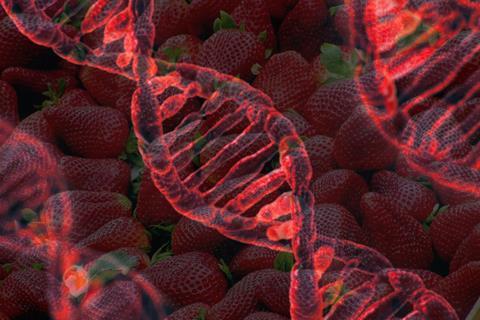
Scientists in Japan are claiming a world first after apparently mapping the genome of a commercially grown strawberry, a breakthrough which could greatly enhance the prospects for those seeking to develop improved varieties of the fruit.
Using software developed by Israeli company NRGene, a team at the Kazusa DNA Research Institute (KDRI) in Chiba Prefecture near Tokyo said it had managed to piece together the strawberry’s complex genomic sequence from data obtained using a system made by US firm Illumina.
The successful mapping of that data could mean that the identification and creation of better strawberry varieties that offer higher standards in terms of product quality, taste, healthiness, disease resistance and longevity are now closer than before.
“With the data from NRGene, strawberry breeders will be able to accelerate the release of better-performing strawberry varieties, creating hardier, more disease-resistant varieties with longer shelf-lives,” commented Sachiko Isobe, who heads up KDRI’s plant genomics and genetics laboratory.
The process is understood to have taken just two weeks, despite the fact that accurate so-called ‘phasing’ or mapping of the strawberry’s genome is more complicated than it is for most plant, animal and human genomes.
Whereas the latter are diploid, containing two variants, the strawberry genome is octoploid and heterozygous, meaning it contains eight almost identical copies of each gene.
“The strawberry assembly demonstrates that even the most complex genomes can be mapped quickly and accurately,” said Gil Ronen, chief executive of NRGene. “The ultimate value in our technology is that it can be deployed to analyse and assemble any genome across all species.”
NRGene’s technology is being used to compare the complete genome sequences of multiple individual samples, the aim being to capture the product’s broad genomic diversity and allow researchers to pinpoint more accurately the positive traits that are common to all varieties.
“It’s exciting to see how NRGene’s analysis, combined with data from Illumina sequencers, can be used to quickly and affordably assemble complex genomes, like that of the strawberry,” said Ryan Rapp, associate director of agrigenomics at Illumina.
“We hope that this technology will make genomics accessible to agricultural researchers worldwide, helping to improve the food supply to make it more sustainable and efficient.”
In from the wilderness
This is not the first time that a strawberry genome has been sequenced, although the international consortium that claimed a similar breakthrough around five years ago actually sequenced the genome of a woodland strawberry, which is understood to be similar to, but less complex than, the commercially cultivated version.
'We've created the strawberry parts list,' the consortium's leader Kevin Folta, associate professor at the University of Florida's Institute of Food and Agricultural Sciences, said at the time.
'For every organism on the planet, if you're going to try to do any advanced science or use molecular-assisted breeding, a parts list is really helpful. In the old days, we had to go out and figure out what the parts were. Now we know the components that make up the strawberry plant.'



